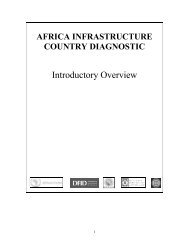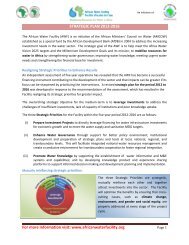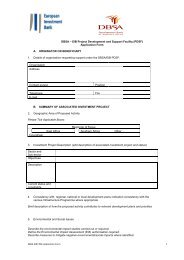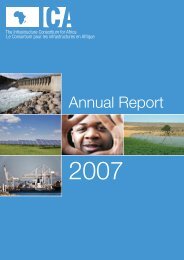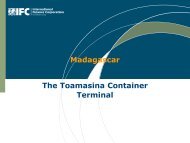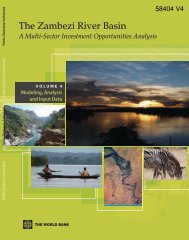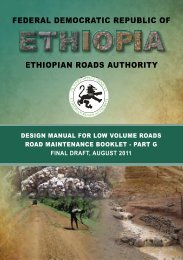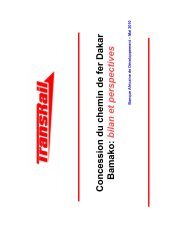Design-Manual-for-Low-Volume-Roads-Part-A
Design-Manual-for-Low-Volume-Roads-Part-A
Design-Manual-for-Low-Volume-Roads-Part-A
Create successful ePaper yourself
Turn your PDF publications into a flip-book with our unique Google optimized e-Paper software.
A - Chapter 1 - 5<br />
Road Safety<br />
Regime<br />
Climate<br />
Maintenance<br />
Regime<br />
Surface/sub-<br />
Surface Hydrology<br />
Construction<br />
Regime<br />
The Road<br />
Environment<br />
Subgrade<br />
“Green”<br />
Environment<br />
Terrain<br />
Controllable<br />
Factors<br />
Traffic<br />
Construction<br />
Materials<br />
Uncontrollable<br />
Factors<br />
Figure A.1.2: Framework <strong>for</strong> sustainable provision of low volume roads<br />
1.3 <strong>Low</strong> volume earth and gravel roads<br />
Surface materials, where these are present, need to resist wear and abrasion in dry weather and promote<br />
surface drainage and run-off in wet weather. Under traffic they need to resist whip off, dust generation and<br />
be stable enough when compacted to resist de<strong>for</strong>mation. The compacted material needs to resist erosion<br />
and scour.<br />
The nature and strength of the underlying soil is critical in determining the per<strong>for</strong>mance of low volume roads,<br />
particularly in periods of wet weather. Many rural roads are characterised by deep rutting, where the road<br />
<strong>for</strong>mation is not strong enough to support the traffic loads. Some roads have loose and/or stony materials on<br />
the surface, leading to dusty, rough and/or slippery conditions. Potholes create difficult and unsafe surfaces.<br />
Severe erosion and scouring may prevent access by any <strong>for</strong>m of motorised, and many types of intermediate,<br />
transport. Transverse scouring can start at the edge or on the side slope of the road and work its way to the<br />
centre of the carriageway. Longitudinal scour occurs where water flows against the direction of road crossfall.<br />
Inadequate scour protection in drainage ditches may lead to serious erosion, dangerous conditions <strong>for</strong> road<br />
users, local access restrictions, and loss of valuable agricultural land along the road.<br />
Rural access may be prevented <strong>for</strong> long periods during the rains when streams and rivers start to flow. In<br />
some situations wash-aways may occur. When the rains have eased or stopped the same points may be<br />
subject to saturation and ponding. This weakens the underlying soils and any movement on the surface can<br />
churn up the surface causing deep rutting and the bogging down of vehicles.<br />
Plate A.1.1: Typical access problems<br />
PART A: DESIGN STANDARD APPROACHES




